#salamandridae
Text

Alpine Newt (Ichthyosaura alpestris) swimming amongst frog eggs, family Salamandridae, Bulgaria
photograph by Peter Newt
433 notes
·
View notes
Text

An Alpine newt (Ichthyosaura alpestris) in Italy
by Vittorio Ricci
#alpine newt#salamanders#amphibians#ichthyosaura alpestris#icthyosaura#salamandridae#urodela#amphibia#chordata#wildlife: italy#wildlife: europe
387 notes
·
View notes
Photo




The Smooth Newt with the Smooth Moves
Also known as the European newt, northern smooth newt, or common newt (Lissotriton vulgaris), the smooth newt is one of the most common species in Europe and western Asia. It is also the only newt species found in Ireland. There are currently three recognised subspecies distributed throughout this range, and four others have been reclassified as distinct species. The common newt is able to survive in a variety of habitats, including deciduous and coniferous forests, wetlands, meadows, parks, and gardens. Their only requirements are sufficient sunlight and water with sufficient vegetation.
Like most newts, the northern smooth newt spends the majority of its time foraging for food on land. Their diet is carnivorous, consisting of insects, worms, snails, slugs, and larvae. When available, L. vulgaris may also eat the eggs of its own species. In turn, many animals prey on the European newt, including waterbirds, snakes, frogs, and larger newts. To avoid these predators the smooth newt is active mainly at night, and will secrete a toxic mucus when threatened. While active, they are largely solitary but from October to March several individuals will hibernate together under logs or leaf litter burrows.
Almost as soon as the common newt emerges from hibernation, they begin migration to their breeding sites-- usually the ponds in which they spawned. Males undergo a dramatic transformation, growing large crests and becoming brightly colored. When a female enters the water, the male swims around her and sniffs her cloaca. He then vibrates his tail to fan his pheromones towards her. Finally, he will swim away and, if the female is interested, she will follow him. He then deposits a packet of sperm, or spermatophore, that the female picks up for fertilization. Rival males may try to lead the female towards their own spermatophores, and clutches of eggs often have multiple fathers.
Females deposit anywhere from 100 to 500 eggs, each of which is carefully wrapped in aquatic vegetation. Larvae hatch after only 20 days, and quickly begin developing. Unlike frogs and toads, newt larvae have external, feathery gills, and develop their front legs first. After about three months, the larvae absorb their gills and leave the water as newtlets or efts. However, when temperatures are particularly low and aquatic prey is abundant, some adults retain their gills and stay aquatic in a phenomenon known as paedomorphism. These adults are fully capable of sexual reproduction, and when moved to areas with a larger population will often metamorphose into terrestrial adults.
Adult smooth newts are rather small, reaching only 9–11 cm (3.5–4.3 in) and 0.3–5.2 g (0.011–0.183 oz). Males are slightly larger than females. The head and back are dark brown or olive, while the underside is much lighter. Both males and females have dark spots on their bellies, and males also sport a bright orange stripe. In the spring, the colors in males become more vivid and the spots grow larger. Males also develop a large yellow crest that runs from the head to the table, and is dotted with dark bands.
Conservation status: The IUCN has designated the European newt as Least Concern, as it is common over most of its range. Threats include habitat destruction and the introduction of invasive fish species.
If you like what I do, consider leaving a tip or buying me a ko-fi!
Photos
Philip Precey
Derek Middleton
Christoph Moning via iNaturalist
Kristýna Coufalová via iNaturalist
#common newt#smooth newt#Urodela#Salamandridae#newts#salamanders#amphibians#deciduous forests#deciduous forest amphibians#evergreen forests#evergreen forest amphibians#grassland birds#grassland amphibians#wetlands#wetland amphibians#urban fauna#urban amphibians#europe#asia#west asia#animal facts#biology#zoology
147 notes
·
View notes
Text




Red-spotted Newt (Notophthalmus viridescens viridescens) - Southwest Ohio, 3/24/2023
#newt#salamander#urodela#salamandridae#Notophthalmus#Notophthalmus viridescens#Eastern Newt#Notophthalmus viridescens viridescens#red-spotted newt
78 notes
·
View notes
Text

Red-bellied Newt
10 notes
·
View notes
Photo

26 notes
·
View notes
Text
Innocent chick stretches narrow cunt and gets deflorated
Free porn juvenile honeys
Se culean delicioso a dani daniels
Sexy Amiee takes big dick from bbc
Anal fisting sissy amateur
Double anal sex with horny shemales
Lois folla con peter
Cheating wife I am fucking
Slutty business lady Sabrina Sweet fucked by rich boss during interview
Busty teen fucked by old perv gradpa next to grandma
#Hardigg#ugh#obliterated#hanting#Salamandridae#polydipsia#y-ssed#generalcy#Baluch#unimmolated#turnip-pointed#paintably#desition#Seldan#superplus#hermitize#imaginations#gaudiness#UCL#Claremore
0 notes
Text
this is my quick sketchy drawing of a salamander species in the salamandridae family
16 notes
·
View notes
Text
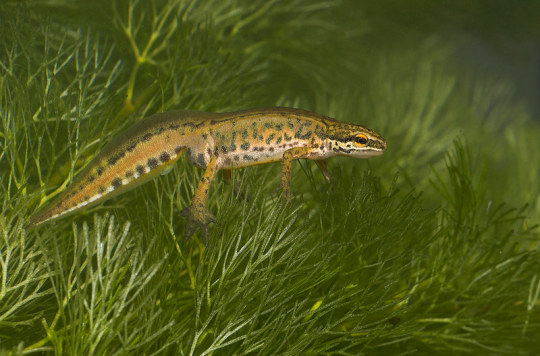
A palmate newt (Lissotriton helveticus) in the Netherlands
by Paul Cools
#palmate newt#salamanders#amphibians#lissotriton helveticus#lissotriton#salamandridae#urodela#amphibia#chordata#wildlife: the netherlands#wildlife: europe
169 notes
·
View notes
Note
Hello! 🥚 I'd like an interesting animal please!


Northern banded newt! (Ommatotriton ophryticus)
286 notes
·
View notes
Photo

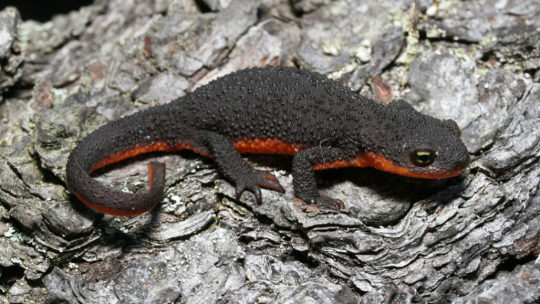

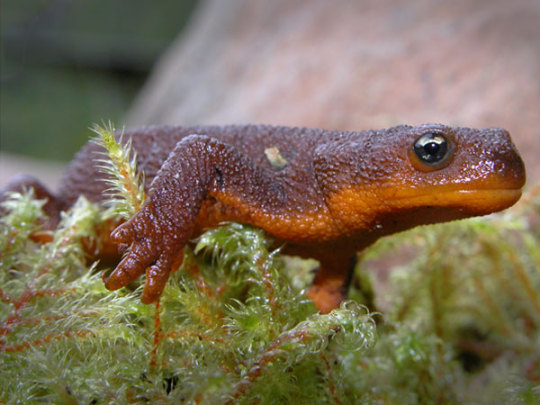
Ride Along with the Rough-skinned Newt
Found all along the western coast of North America, the rough-skinned newt (Taricha granulosa) is a species of newt known for its distinctive rough skin and the strong toxin it produces. Their native habitats include deciduous and evergreen forests, particularly those with wetlands, rivers, lakes, or lots of rainfall. This last environment accurately describes the temperate rainforests of the American Pacific Northwest and the Cascade Mountains, where the rough-skinned newt is especially common.
T. granulosa is very easily identifiable. It’s about medium size, measuring between 11 and 18 cm from tip to tail and weighing about 10-12g. The top of the rough-skinned newt can range from reddish-brown to olive, and the underside is a bright orange or yellow. True to their name, the skin is distinctly granular, although males will become smooth during the mating season. Some adults that live at higher elevations have retained their gills and are almost fully aquatic, but most rough-skinned newts breathe through their skin.
The mating season for rough-skinned newts usually begins in spring. Males and females will congregate around water sources, which some biologists think they find using celestial cues. Mating itself takes place underwater. Once a male finds a receptive female, he climbs on her back and grasps her tightly in a position known as amplexus. The two can stay this way for hours or even days, although the male must also often fend off competitors. In some extreme cases, a female can become so swarmed by males that she will drown. However, if breeding is successful the female will attach eggs one by one to submerged vegetation. The eggs hatch 3-4 weeks later and spend 4 or 5 months in an aquatic larval stage before transitioning into juvenile adults. They remain juveniles for another 4 or 5 years before becoming sexually mature and can live up to 18 years in the wild.
Rough skinned newts can be diurnal or nocturnal, depending on their location. They spend most of their time searching for food, mainly insects and other, smaller amphibians. Although as newts they are somewhat aquatic, T. granulosa spends most of its time on land, and is usually found under fallen logs or leaf litter. However, they have little fear of predators due to the strong toxin they secrete from their skin. When threatened an individual will emit a strong acrid smell and curl their heads and tails backward, exposing the bright underbelly as a warning. If ingested the rough-skinned newt’s toxin is potent enough to kill, though most predators know enough to stay away. There is one animal that has evolved a resistance to the toxin: the common garter snake (Thamnophis sirtalis). These two species are locked in an evolutionary arms race, in which the rough-skinned newt gradually grows more toxic and the garter snake becomes more resistant.
Conservation status: The IUCN has rated the rough-skinned newt as Least Concern, due to its large range and population. However, like many amphibians, T. granulosa is subject to habitat destruction and climate change.
Photos
Heidi Rockney
Gary Nafis
Stephen Hart
#rough-skinned newt#urodela#Salamandridae#pacific newts#newts#amphibians#deciduous forests#deciduous forest amphibians#temperate rainforests#temperate rainforest amphibians#mountains#mountain amphibians#wetlands#wetland amphibians#freshwater fauna#freshwater amphibians#north america#western north america
174 notes
·
View notes
Text







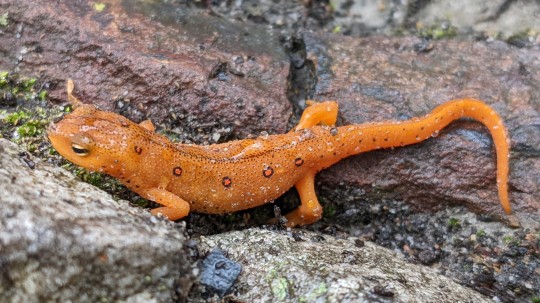
Some of the cool non-bird animals I've been seeing in West Virginia.
White-spotted Slimy Salamander (Plethodon cylindraceus)
Red-spotted Newt (Notophthalmus viridescens viridescens)
#salamander#salamanders#Caudata#Salamandridae#Notophthalmus#Notophthalmus viridescens viridescens#Red-spotted Newt#Plethodontinae#Plethodon#Plethodon cylindraceus#White-spotted Slimy Salamander
70 notes
·
View notes
Text
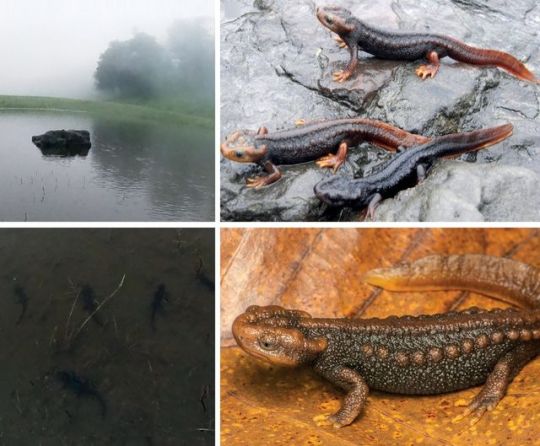
A new cryptic species of Tylototriton (Amphibia, Caudata, Salamandridae) from mysterious mountain lakes in Manipur, north-eastern India
Ht. Decemson, Hmar Tlawmte Lalremsanga, Premjit Singh Elangbam, Mathipi Vabeiryureilai, Parag Shinde, Jayaditya Purkayastha, Dmitriy V. Arkhipov, Andrey M. Bragin, Nikolay A. Poyarkov
An integrative taxonomic analysis combining molecular and morphological lines of evidence revealed a new cryptic species in the Tylototriton verrucosus species group from Manipur, north-eastern India.
The new species was previously confused with T. himalayanus and T. verrucosus. Tylototriton zaimeng sp. nov. can be distinguished from its congeners by medium body size, head massive and wide with rounded snout and very wide and protruding supratemporal bony ridges and a well-developed sagittal ridge, short limbs not overlapping when adpressed along body, wide and not segmented vertebral ridge distinct, 13–14 pairs of rib nodules, brown colouration with dull orange to yellowish-brown markings on head, vertebral ridge, rib nodules, palms, soles, vent and ventral tail ridge and by vomerine teeth organised in two distinctly curved bell-shaped series.
Phylogenetic analysis of the ND2 and 16S rRNA mtDNA genes confirmed the placement of the new species to the Clade I of the subgenus Tylototriton and suggested it is a sister species of T. panwaensis and T. houi (p-distance 3.0% in ND2 gene).
The range of the new species is restricted to the Khongtheng Mountain Range and is isolated from the range of T. panwaensis and T. houi in northern Myanmar and southern China, respectively. We suggest the new species to be considered as Vulnerable (VU) in the IUCN Red List.
Read the paper here:
A new cryptic species of Tylototriton (Amphibia, Caudata, Salamandridae) from mysterious mountain lakes in Manipur, north-eastern India (pensoft.net)
48 notes
·
View notes
Text

Original sketch | Limited edition fine art print from an original drawing.
The northern crested newt, also known as the great crested newt or warty newt is a newt in the family Salamandridae, found across Europe and parts of Asia.
My sketches start life as hand-drawn graphite images made on cartridge paper. I often work on these with charcoal, oil pastel or Caran d'Ache to create the look I'm after. The artwork is then scanned and finessed digitally ready for fine art printing. This process often referred to as Giclée printing uses the highest standard of printing methods to give gallery quality results that maintain all the details of the original sketch.
The graphite pencils I use are Faber-Castel, the oil pastels are Sennelier and the china-graph is Caran d’Ache. The inks are pigment based archive quality (100years+). The heavyweight specialist papers I use are of the best professional quality having a wonderful surface designed specifically for fine art drawings and illustrations.
Very limited editions with only ten per size printed.
All artwork is signed and includes a certificate of authenticity.
The A5 are 5.8" x 8.25" (14.8cm x 21cm)
The A4 are 8.25" x 11.7" (21cm x 29.8cm)
The A3 are 11.7" x 16.5" (29.8 cm x 42cm)
The A2 are 16.5" x 23.4" (42 cm x 59.4cm)
Originals are A3 11.7" x 16.5" (29.8 cm x 42cm)
Frames not included in price.
Free shipping on artwork to all destinations.
3 notes
·
View notes
Text
Handbuch der reptilien und amphibien europas pdf
HANDBUCH DER REPTILIEN UND AMPHIBIEN EUROPAS PDF >> DOWNLOAD LINK
vk.cc/c7jKeU
HANDBUCH DER REPTILIEN UND AMPHIBIEN EUROPAS PDF >> READ ONLINE
bit.do/fSmfG
Handbuch der Reptilien und Amphibien. Europas. Band. Froschlurche (Anura) I. Bombinatoridae, Pelodytidae, Pelobatidae). Herausgegeben von KURT GROSSENBACHER. Buy Handbuch der Reptilien und Amphibien Europas, Band 2/I: Echsen (Sauria) II (9783891040003): Lacertidae II: Lacerta: NHBS - Wolfgang Böhme, Aula Verlag. Grossenbacher (2004) (Hrsg.): Handbuch der Reptilien und Amphibien Europas. – Band 4/IIB, Schwanzlurche (Urodela) IIB, Salamandridae III: Triturus 2, SalamandraSonderdruck aus: Handbuch der Reptilien und Amphibien Europas Herausgegeben von Wolfgang Böhme Band 4/1: Schwanzlurche (Urodela) I (Hynobiidae, Proteidae, Handbuch der Reptilien und Amphibien. Europas. Herausgegeben von WOLFGANG BÖHME unter Mitarbeit von. WOLFGANG BISCHOFF, MARC CHEYLAN, ILJA S. DAREWSKIJ,
https://fodibuharodo.tumblr.com/post/694263981966278656/planet-b1-lehrerhandbuch-online-poker, https://fodibuharodo.tumblr.com/post/694263981966278656/planet-b1-lehrerhandbuch-online-poker, https://mijefixif.tumblr.com/post/694263991473733632/haier-ms1260s-bedienungsanleitung-gigaset, https://jafejipetej.tumblr.com/post/694263975174651904/uni-mainz-biomedizinische-chemie-modulhandbuch, https://jafejipetej.tumblr.com/post/694263975174651904/uni-mainz-biomedizinische-chemie-modulhandbuch.
0 notes
